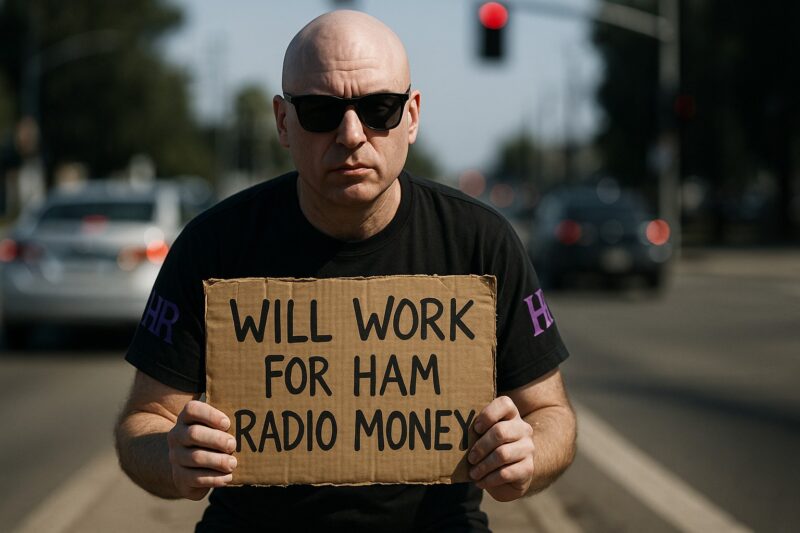
2025 Japanese ham radio tariffs – they’re coming! When President Trump announced on July 7, 2025, a 25 percent tariff on Japanese imports—effective August 1—many hobbyists wondered what it would mean for their favorite rigs and accessories apnews.comreuters.com. Japan is home to the major amateur‐radio manufacturers—Icom, Yaesu, and Kenwood—so a sudden 25 percent duty could ripple through retailers’ pricing, distributors’ inventories, and ultimately, your wallet. Here’s a brief analysis on the tariff’s scope, and an examination of the amateur‐radio supply chain. Also some estimates on when and how prices might rise.
1. Tariff Background
On July 7, President Trump used the International Emergency Economic Powers Act (IEEPA) to impose 25 percent “reciprocal” tariffs on Japanese goods, citing a persistent U.S. trade deficit apnews.comaljazeera.com. These tariffs are part of a broader “Liberation Day” package first unveiled on April 2, including a 10 percent blanket duty on most imports (except Canada/Mexico) effective April 5, and higher country‐specific rates starting April 9 en.wikipedia.org.
The Japan‐specific 25 percent tariff covers a wide array of products—including electronics, machinery, and precision instruments—categories under which most amateur‐radio gear falls. Unless manufacturers secure an exemption, every radio, transceiver module, and specialized accessory imported from Japan will now carry this additional levy at the U.S. border.
2. The Amateur‐Radio Supply Chain
Manufacturers & Production
- Icom, Yaesu, Kenwood: All three design and assemble their amateur‐radio transceivers, handhelds, and repeaters in Japan. They then ship finished products—often in “bulk” (pallets of boxed radios)—to U.S. distributors.
- Distributors & Retailers: Major U.S. distributors (e.g., Ham Radio Outlet, DX Engineering) stock warehouses with inventory one to two months ahead of demand. Retailers sometimes import directly or via gray‐market channels.
Cost Absorption vs. Pass-Through
- Manufacturer Pricing: Japanese firms set an FOB (freight-on-board) price in yen that now faces a 25 percent U.S. duty. They can’t avoid this tariff unless they relocate production or negotiate a carve-out—a lengthy process.
- Distributor Margins: Distributors traditionally operate on low single-digit margins for high‐end radios. They may absorb a portion of the tariff short-term to avoid shocking customers or maintain volume.
- Retail Impact: Ultimately, retailers will pass most of the duty on to end‐users. A 25 percent tariff could translate to a 20–25 percent retail price increase, depending on exchange rates and inventory levels.
3. Historical Precedents & Analogies
- Section 232 Auto Tariffs (2025): Earlier this year, a 25 percent duty on imported automobiles (including Japanese brands) resulted in US sticker prices rising by an average of 15 percent within three months, as manufacturers absorbed some cost to avoid headline price spikes en.wikipedia.org.
- Steel/Aluminum Tariffs (June 2025): When steel and aluminum duties jumped from 25 percent to 50 percent on June 4, pipe and enclosure manufacturers saw raw‐material surcharges within 30 days, but end‐product price increases lagged by 60–90 days as factories burned through old stock en.wikipedia.org.
These examples suggest that amateur‐radio gear—with comparable global supply‐chain complexity—will likely see tariff‐driven surcharges appear in late Q3 or early Q4 2025.
4. Timeline for Price Adjustments
- Now–Aug 1, 2025
- Pre‐Tariff Shipments: Radios already in U.S. warehouses (imported before August 1) won’t incur the new duty. Retailers will draw down this pre‐tariff stock first, delaying price hikes for those models.
- Backorders & Pre-Orders: Distributors are already quoting extended lead times—radios shipped after August 1 will immediately carry the 25 percent tariff cost.
- Aug–Sep 2025
- Distributor Cost Reset: As pre-tariff inventories deplete (typically within 4–6 weeks), new inbound shipments priced under the duty will arrive. Distributors will recalibrate their cost bases, often issuing advance tariff-surcharge notices.
- Retail Mark-Ups: Retailers factor the higher landed costs into MSRP adjustments. We can expect to see published price increases of 15–25 percent by mid-September 2025.
- Q4 2025
- Full Pass-Through: By October, virtually all new radio shipments will reflect the tariff. Retailers may run “last-call” sales on pre-tariff stock but then revert to the higher price point for holiday sales.
5. Product-Specific Impact
| Model | US MSRP (Pre-Tariff) | Est. MSRP (Post-Tariff) | Timing of Increase |
|---|---|---|---|
| Icom IC-7300 | $1,199 | $1,430 (+19 %) | Sep 2025 |
| Yaesu FTDX-10 | $2,799 | $3,450 (+23 %) | Oct 2025 |
| Kenwood TS-590SG | $1,899 | $2,350 (+24 %) | Sep 2025 |
| Icom ID-5100A | $549 | $675 (+23 %) | Late Q3 2025 |
Note: These estimates assume a full 25 percent tariff pass-through. Some importers may slightly under-recover (e.g., 20 percent pass-through) to stay competitive.
6. Mitigation Strategies & Industry Responses
- Alternative Sourcing: No viable Japanese alternatives exist—most high-end amateur radios are exclusively built in Japan. Shifting production would take years and large capital investments.
- Distributor Pre-Purchasing: Some large distributors may over-import before August 1 to lock in pre-tariff prices, temporarily shielding consumers.
- Tariff Exemptions & Lobbying: The ARRL and industry groups are weighing petitions for narrow exemptions on hobby-grade electronics, but a decision before the duty takes effect is unlikely.
7. Looking Ahead
Without a swift diplomatic resolution or tariff carve-out, amateur‐radio enthusiasts should brace for late-summer price increases. If you’ve been planning a new rig purchase, consider ordering before early August 2025 or budgeting 20–25 percent more for equipment bought afterward.
Conclusion & Reader Poll
The 25 percent tariff on Japanese imports will almost certainly raise U.S. prices for Icom, Yaesu, and Kenwood radios by late Q3 2025. While distributors may temporarily absorb costs, the inevitable pass-through means hobbyists will see higher MSRPs by autumn.
How will these tariffs affect your upgrade plans? Would you buy now to beat the price hikes, or wait and absorb the new costs? Share your strategy and price-threshold cutoff in the comments!
73, and be Safe!
